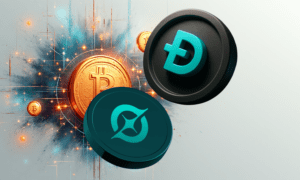Welcome to the future of convenient transactions! In a world where speed and efficiency reign supreme, contactless payment is transforming the way we shop, dine, and travel. Gone are the days of fumbling for loose change or struggling with a clunky card reader. With just a simple tap or wave, you can effortlessly complete your purchases in an instant. But what exactly is contactless payment? How does it work? And why is it becoming increasingly popular? Join us as we dive into this game-changing technology that promises to revolutionize our everyday lives. Get ready to unlock a new level of convenience and discover the endless possibilities of contactless payment!
What is Contactless Payment?
In recent years, contactless payment has become an increasingly popular way to pay for purchases large and small. Contactless payment is a type of electronic payment where transactions are completed without the need for physical contact between the payer and payee. This can be done in a number of ways, but typically involves the use of a smartphone or other device that is equipped with near-field communication (NFC) technology.
One of the biggest advantages of contactless payments is that they are incredibly convenient. There’s no need to fumble around with cash or cards; you can just tap your phone on the terminal and be on your way. This convenience factor is one of the main reasons why many experts believe that contactless payments are the future of electronic transactions.
Another advantage of this type of payment is that it’s much more secure than traditional methods like cash or checks. With contactless payments, your personal information is never shared with the merchant, so there’s no risk of identity theft or fraud. Additionally, most contactless payment systems come with built-in security features like encryption that help protect your data.
How Does Contactless Payment Work?
In order to understand how contactless payment works, it is first important to understand what radio-frequency identification (RFID) is. RFID is a technology that uses electromagnetic fields to automatically identify and track tags that are attached to objects. The tags contain electronically stored information that can be read by an RFID reader.
Contactless payments use RFID technology in order to allow customers to make payments by simply waving their card in front of a contactless reader. The card must be within a few inches of the reader in order for the transaction to take place. When the card is close enough to the reader, the information on the card’s tag is read and transmitted to the merchant’s point-of-sale system. The customer’s account is then charged for the purchase price of the goods or services.
Contactless payments are convenient because they eliminate the need for customers to fumble around with cash or swipe their cards through a traditional credit card reader. Contactless payments can also be made using mobile phones and other devices that are equipped with NFC (near-field communication) technology.
The Benefits of Contactless Payment
There are many benefits to contactless payments. Perhaps the most obvious benefit is that it’s a more convenient way to pay for goods and services. Instead of fumbling around with cash or a credit card, you can simply tap your phone or wearable device on a contactless reader and be on your way.
Another benefit of contactless payments is that they’re typically more secure than traditional payment methods. When you pay with a credit card, your information is stored on the magnetic stripe on the back of the card. This information can be easily stolen if the card is lost or stolen or if a merchant’s point-of-sale system is hacked. With contactless payments, your information is not stored on the device itself, so it’s much harder for thieves to get their hands on your personal data.
Contactless payments can help you keep better track of your spending. When you use cash, it’s easy to lose track of how much you’ve spent. But when you use a contactless payment method like Apple Pay or Google Wallet, you can see all of your transactions in one place. This can help you stay within your budget and avoid overspending.
The Risks and Potential Issues of Contactless Payments
Contactless payments are growing in popularity, but there are still some risks and potential issues to be aware of. One risk is that if your contactless payment card is lost or stolen, it can be used to make unauthorized purchases. Another potential issue is that if you use a contactless payment card at a terminal that has been tampered with, your card information could be stolen. You should be aware that not all merchants accept contactless payments, so you may need to have another form of payment ready just in case.
Examples of Contactless Payment Solutions
Contactless payments are becoming increasingly popular as consumers look for more convenient ways to pay. There are a number of different contactless payment solutions available, each with its own advantages and disadvantages.
One of the most popular contactless payment solutions is Apple Pay. Apple Pay allows users to make payments using their iPhone or Apple Watch. Payments are made by holding the device near a contactless reader and confirming the payment with a fingerprint or passcode. Apple Pay is widely accepted by merchants and is very secure, making it a great option for those looking for a convenient and safe way to pay.
Another popular contactless payment solution is Google Pay. Google Pay works in a similar way to Apple Pay, allowing users to make payments using their Android phone or tablet. Payments are made by holding the device near a contactless reader and confirming the payment with a fingerprint or passcode. Google Pay is also widely accepted by merchants and is very secure, making it another great option for those looking for a convenient and safe way to pay.
There are a number of other less common contactless payment solutions available, such as Samsung Pay and Microsoft Wallet. These solutions typically work in a similar way to Apple Pay and Google Pay but may not be as widely accepted by merchants. They can still be a good option for those looking for a convenient way to pay, but it’s important to check compatibility before using them.
Contactless Payment Trends
There’s no doubt that contactless payments are on the rise. In fact, a recent study found that 43% of consumers around the world would like to use their smartphones to make contactless payments. And it’s not just consumers who are interested in this technology; businesses are, too. After all, contactless payments offer a more convenient and efficient way to process transactions.
So, what exactly are contactless payments? They’re simply transactions that don’t require physical contact between the customer and the merchant. Instead, customers can simply wave their smartphones or other devices in front of a reader to complete a purchase.
One of the most popular types of contactless payments is Apple Pay. This system allows customers to use their iPhones or Apple Watches to make purchases at participating stores. Android Pay and Samsung Pay are two other examples of contactless payment systems.
Of course, as with any new technology, there are some potential drawbacks to consider. For instance, if you lose your device, someone else could theoretically make unauthorized purchases with it. Additionally, contactless payment systems are often less secure than traditional methods like credit cards because they rely on Near Field Communication (NFC) technology, which can be hacked.
Though the advantages of contactless payments seem to outweigh the disadvantages, That’s why we believe this trend is here to stay and will only continue to grow in popularity in the years to come.
Conclusion
As we become increasingly reliant on technology in our everyday lives, it’s no surprise that contactless payments are on the rise. This convenient payment method is not only fast and easy, but it’s also secure. With so many benefits, it’s no wonder that contactless payments are the future of convenient transactions.



































